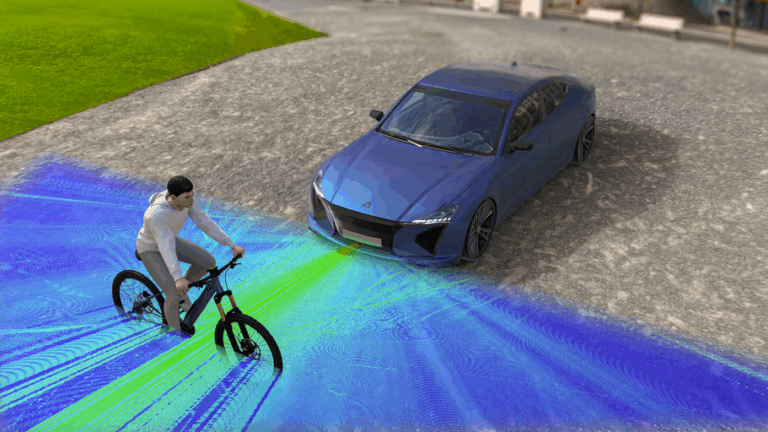Introduction
It’s late at night on a busy highway. A car drifts slightly out of its lane, but before the driver even reacts, the ADAS lane-keeping system gently corrects the course. What could have been a dangerous moment passes unnoticed thanks to advanced sensing and control.
This is the promise of Advanced Driver Assistance Systems (ADAS). By combining antennas, sensors, connectivity and software, they make driving safer and pave the way toward autonomous vehicles. Behind this promise, however, lies a significant engineering challenge: ensuring all these systems work reliably in real-world conditions. Testing every possibility on the road is not practical. High-fidelity simulation provides the answer. It allows engineers to design, validate and optimize ADAS performance long before a physical prototype is built.
What You’ll Learn
In this article, we’ll explore:
- The most significant challenges in developing safe and reliable ADAS.
- How simulation supports antenna design, radar accuracy, human safety, weather resilience, connectivity and more.
- How Dassault Systèmes solutions help automakers accelerate innovation and reduce risk.
The Challenges of ADAS
To function properly, ADAS must continuously interpret its surroundings: road markings, signs, weather conditions, pedestrians, other vehicles and connected infrastructure. Achieving this requires seamless integration of radar, cameras, LiDAR, GPS and 5G or 6G connectivity.
Yet, these systems face significant challenges: antennas are affected by vehicle geometry, multiple systems can interfere with each other, sensors must comply with strict safety regulations, and environmental factors such as rain or mud can block cameras. Covering every possible condition with physical testing alone would be prohibitively expensive and time-consuming.
How Simulation Strengthens ADAS
Simulation helps engineers anticipate and solve these issues early in the design cycle. It provides a virtual environment where antennas, sensors and connectivity can be tested across countless real-world scenarios.
Antenna Design and Placement
The shape and materials of a vehicle can dramatically influence antenna performance. What works in theory may not work in practice once installed on a curved, metallic body. Simulation allows engineers to evaluate placement, analyze performance indicators such as gain and beam direction and refine designs early.
With Antenna Magus and CST Studio Suite, teams can quickly select antenna designs, run full-vehicle electromagnetic simulations and optimize placement for maximum coverage.
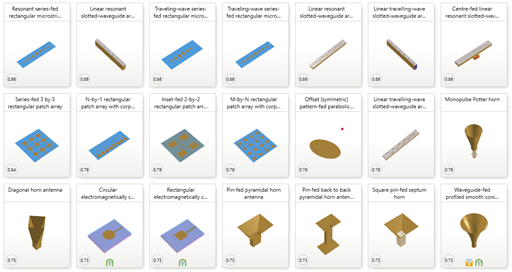
Radar Post-Processing and Ghost Target Detection
Radar is essential for detecting obstacles, but reflections from nearby objects can generate “ghost targets.” These false signals risk confusing the system if not addressed.
CST Studio Suite offers advanced radar post-processing capabilities, enabling engineers to visualize signal paths, examine channel impulse responses and analyze Doppler velocity and angle of arrival. This ensures radar arrays are configured to minimize ghost targets and deliver accurate detection.
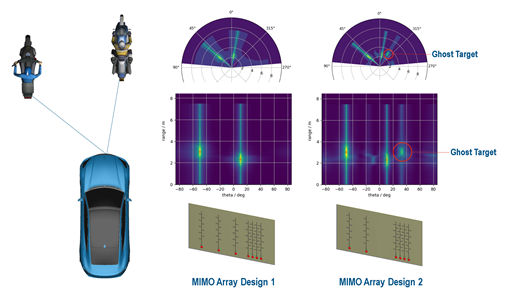
Human Exposure Compliance
Antennas and sensors emit electromagnetic fields that must remain within global safety standards. Physical testing is costly and limited, but simulation enables the analysis of exposure in realistic scenarios.
With CST Studio Suite, engineers can place virtual human body models inside and around the vehicle, automatically calculate Specific Absorption Rate (SAR) and confirm compliance with regulatory thresholds.
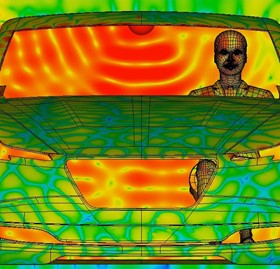
Soiling Optimization
Weather and road conditions can block cameras and sensors with rain, snow, or mud, limiting their effectiveness. Predicting and mitigating this early is critical.
With PowerFLOW, fluid dynamics simulations predict spray patterns under different driving conditions. Engineers can identify at-risk sensors and adjust vehicle design or placement to minimize soiling.
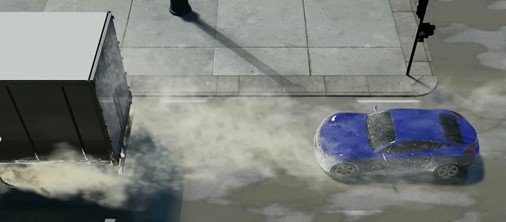
Virtual Test Driving
No physical test program can cover the endless variety of driving conditions ADAS must face. Virtual test driving provides a safe and cost-effective alternative.
Using CATIA SCANeR, engineers can create realistic driving environments, validate ADAS algorithms under countless traffic and weather scenarios and gather insights that feed directly into design refinement.
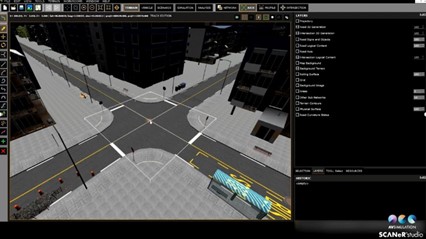
6G Connectivity and Smart City Simulation
As vehicles become more connected, reliable V2X and future 6G links must be validated in complex environments. Traditional antenna metrics are not enough; engineers need to understand how signals behave under real-world conditions.
With CST Studio Suite, engineers can simulate the propagation of large-scale electromagnetic waves using detailed 3D models of buildings, roads, terrain and surrounding vehicles. These studies enable the evaluation of coverage, interference and channel response along representative drive routes, helping to ensure that ADAS connectivity remains robust and resilient in dense environments.
Collaboration Across Teams
ADAS development involves mechanical engineers, electronics specialists, system architects and more. The 3DEXPERIENCE platform provides a unified environment where:
- Teams always work with the latest geometry and system models.
- CAD, PLM and simulation data remain synchronized.
- Intellectual property is protected while enabling collaboration.
- Development cycles are shorter and risks are reduced.
Conclusion
Building reliable ADAS requires more than adding sensors to vehicles. It demands an integrated ecosystem where antennas, electronics, connectivity and software all work together seamlessly.
With SIMULIA and CATIA solutions, engineers can simulate every aspect of ADAS, from antenna placement and radar ghost target detection to human exposure compliance and 6G city-scale connectivity. With the 3DEXPERIENCE platform, all this knowledge is brought together, enabling collaboration, integration and full life cycle traceability.
This model-based, end-to-end approach enables automakers to reduce development costs, accelerate innovation, and confidently transition from assisted driving to full autonomy.
Learn more in our white paper, Simulate ADAS and AV Systems.

Interested in the latest in simulation? Looking for advice and best practices? Want to discuss simulation with fellow users and Dassault Systèmes experts? The SIMULIA Community is the place to find the latest resources for SIMULIA software and to collaborate with other users. The key that unlocks the door of innovative thinking and knowledge building, the SIMULIA Community provides you with the tools you need to expand your knowledge, whenever and wherever.
